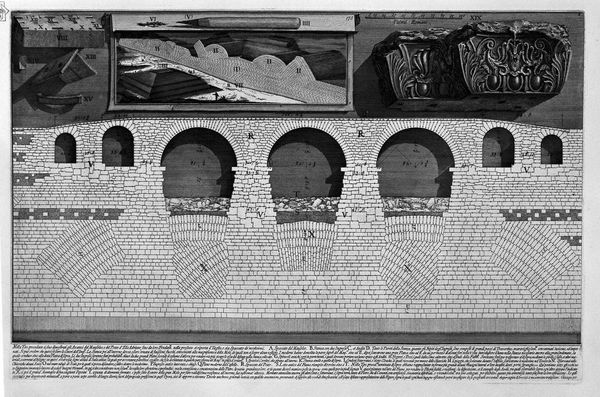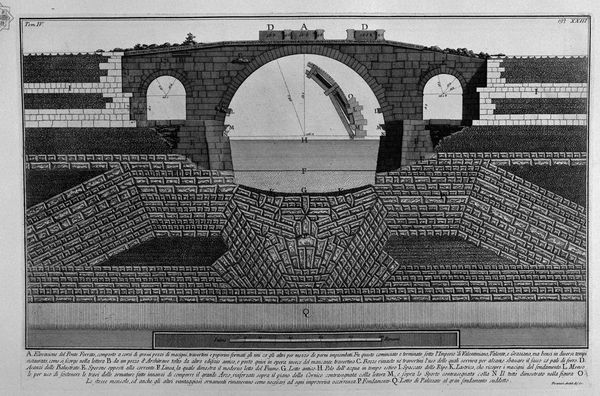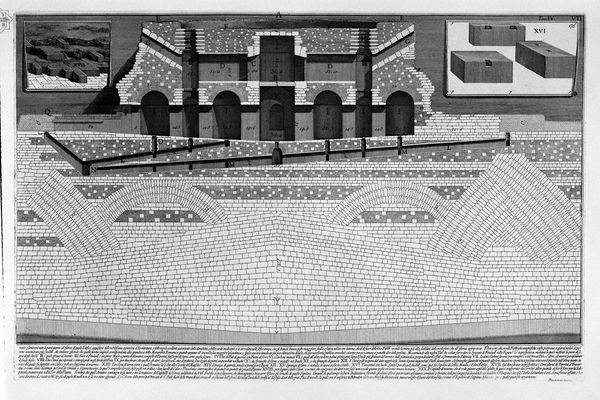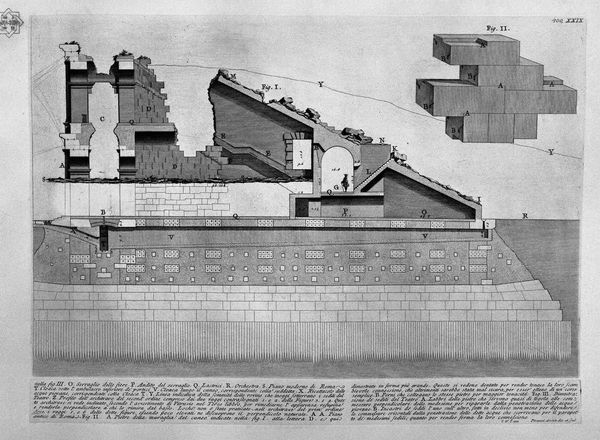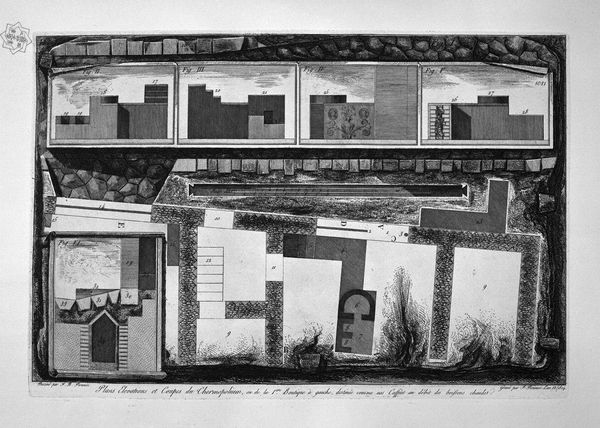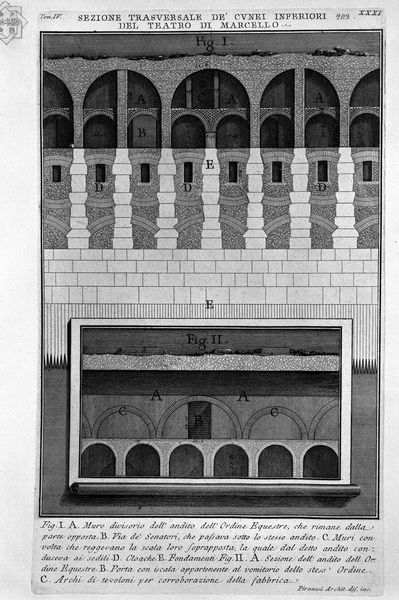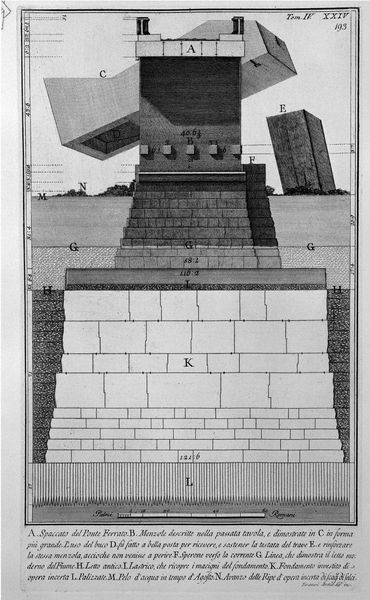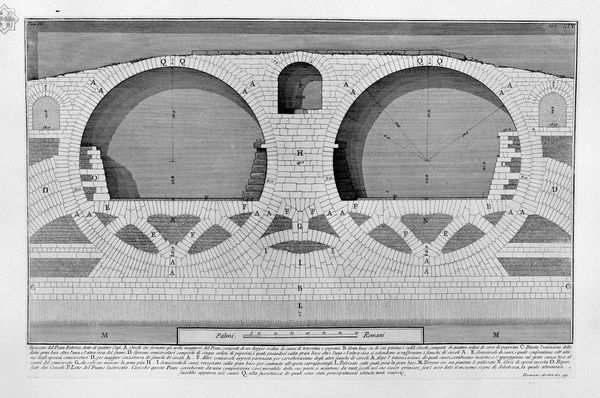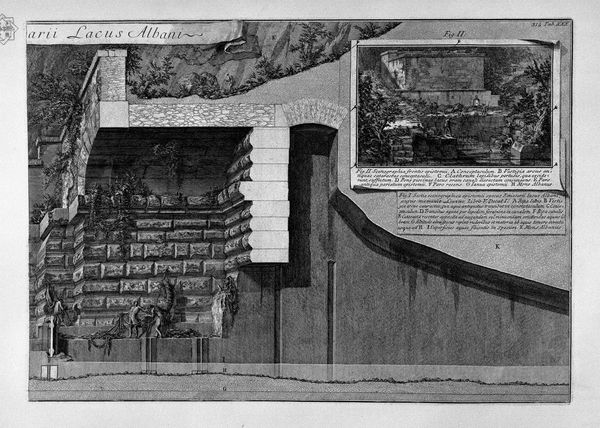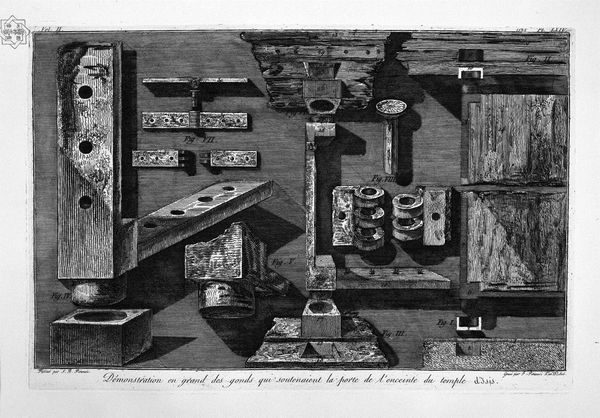
The Roman antiquities, t. 4, Plate V. Plan of the Mausoleum of Hadrian and Bridge St. Angel.
0:00
0:00
drawing, print, etching, photography, engraving, architecture
#
drawing
# print
#
etching
#
landscape
#
perspective
#
photography
#
ancient-mediterranean
#
black and white
#
arch
#
monochrome photography
#
cityscape
#
engraving
#
architecture
#
building
#
monochrome
Copyright: Public domain
Editor: Here we have Giovanni Battista Piranesi's "Plan of the Mausoleum of Hadrian and Bridge St. Angel," an etching of Roman antiquities. What strikes me is its technical, almost diagrammatic approach, yet it evokes a sense of grandeur despite being black and white. How do you see this piece functioning within the broader scope of art history and its cultural impact? Curator: What immediately grabs me is how Piranesi, through his detailed etchings like this one, actively shaped and reshaped the understanding of Roman antiquity for his contemporaries and future generations. Consider the act of recreating this imagery – the political weight of representing the fallen empire, or rather what was left of it. Why choose these subjects, and how does presenting the work through prints inform the public role of the art itself? Editor: That’s fascinating – this print being a political statement as well as architectural documentation! The layers upon layers of brickwork he renders – were they meant to be symbolic, beyond pure representation? Curator: Exactly! Look at how the precision becomes a statement. In focusing on infrastructure – the bridge, the mausoleum – what values were prioritized by Roman society, and how are those choices reflected in Piranesi’s depiction? Then, think about *our* gaze on this print today, and how that's filtered by contemporary art institutions. Does that context change our experience? Editor: It absolutely does. Knowing this was not simply a neutral study but a consciously framed view shifts my perception entirely. Thanks! Curator: Indeed. It's through that continual process of reframing and contextualization that art historical understanding deepens. And for me, the value lies in acknowledging how cultural and social forces constantly renegotiate the power of images like these.
Comments
No comments
Be the first to comment and join the conversation on the ultimate creative platform.
